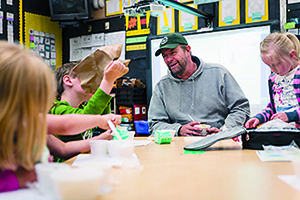One hundred years ago, Americans ate oysters not shrimp. Our per-capita consumption of oysters back then matches what we eat in shrimp now. Shrimp is the most popular seafood today, but unlike those American grown oysters, most of it is farmed and imported.
The "seafood swap," according to Paul Greenberg, who pointed this out in a New York Times essay adapted from his new book "American Catch: The Fight for Our Local Seafood," goes beyond the high amount of imported fish we eat:
"While a majority of the seafood Americans eat is foreign, a third of what Americans catch is sold to foreigners," he writes. For example, three-quarters of Alaska salmon is exported while we eat imported farmed product from Chile. As a result, we are "radically disconnected from our seafood supply," writes Greenberg.
For fishermen, globalization has mixed results. One of the downsides, however, is that lack of connection between you and your community. How are people going to value their local fishermen and industry when they don't eat your fish?
That's one of the reasons why I believe serving fish in schools, part of the national farm-to-school movement, is so important (for the full story, see our August issue, page 20).
The farm-to-school movement puts local product on school lunch menus. For a community like Sitka, Alaska, it made sense to bring in local seafood, particularly salmon instead of imported processed fish and other proteins from the Lower 48.
Kids in Sitka are getting to know their fish and fishermen. They learn about salmon's life cycle in the Stream to Plate curriculum and they also meet fishermen who donate much of the fish.
Educating young minds could be the best way to get more Americans to value their local seafood. It reminds me of a conversation I had about Seafood 101, which uses the Newspapers in Education program to educate schoolchildren about fish and how fisheries are managed. Rebecca Reuter of NOAA compared the program to recycling. When she was a kid in the '80s, it was an up-and-coming trend first embraced by kids.
Now we all recycle. Can kids today do the same thing for local seafood tomorrow?
 Don't forget that you can get
Don't forget that you can get
fishing news headlines delivered
right to your inbox by subscribing to
our twice-weekly e-newsletter.







